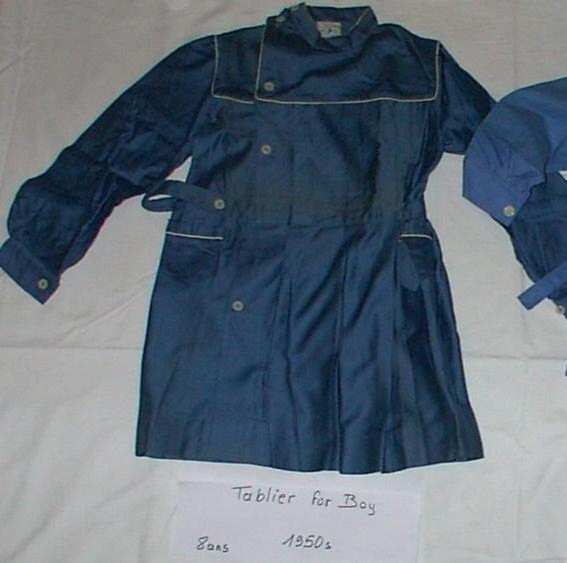
Figure 1.--This side-buttoning smock was worn by French boys from the 1930s-50s. This smock was made in the early 1950s for an 8-year old boy. Here we see the front view. Like back buttoning smocks there was a waistband which buttoned.

The three basic types of school smocks deal with how the smock closed. French boys have since worn many styles of smocks, including back buttoning, side buttoning, and front buttoning. The front buttoning smocks sometimes had the buttons set somewhat to the side rather than down the center. I belive that smocks for boys and girls were intially quite similar, if not identical. I'm not sure why this back buttoning style was adopted as it made it difficult for boys to put them on and take them off. It made some sence for younger boys as it was easier for mother to help them dress, but it made it difficult for even older boys to put then on or take then off by themselves. Beginning in the 1950s, front buttoning smocks became increasingly popular for boys, although some boys still wore the back buttoning style. The back buttoning style, however, was still widely worn by girls. Popularity of these different syles have changed over time. Both boy and girls have woen all three types of smocks, although the popularity with boys and girls have changed over time.
HB has very limited information about early French school smocks. We believe that virtually all school smocks were when introduced by the Third Republic in 1871 back buttoning smocks. We also believe that smocks for boys and girls were intially quite similar, if not identical--but our information is still quite limited. I'm not sure why this back buttoning style was adopted as it made it difficult for boys to put them on and take them off. It made some sence for younger boys as it was easier for mother to help them dress, but it made it difficult for even older boys to put then on or take then off by themselves. Back buttoning smocks continued to be the pimarty types od smocks worn after World ar I and even World War II. Many stlictic variations appeared in he 1930s, including side and front buttoning smocks. We have seen back buttoining smocks made for boys as young as 2 years of age. This suggests that some mothers used back-buttoning smocks for pre-school boys still at home. By the 1950s boys usuallu wore these back bittoning smocks to about 8 years of age, however, iy was not uncommon to see boys wearing thrm up to about age 10.
The front buttoning smocks sometimes had the buttons set somewhat to the side rather than down the center. We refere to these as side buttoning smocks., some of which had buttons set fully to the side.
We first notice these smocks in the late 1920s. They may have appeared earlier, but we can not yet confirm that. We do not know precisely when this style appeared. We do not think it was commonly worn before World War I. Side buttonimg smocks were a popular school smock style into the 1950s. They were avaiable in sizes beginning at about 4 years of age. We are sure why this style appeared in the 1930s. We note many changes in French school smcks during the 1930s. Presumably boys found the side buttons more convenient. We do not yet, however, have any actual accounts revealing what boys actually thought about side buttoning smocks. But we are unsure how much importance mothers attached to this. One French readers suggest that boys smocks were chosen mostly according to the mother's fashion tastes than the boy's preferences. We thus are unsure as to just why the side buttoning smocks became so popular.
HBC notes front buttoning smocks in the 1930s. They may have ppeared earlier, but they do not appear to have begun to be popular until the 1950s. At least we do not begin seeing them in substantial numbers until the 1950s. In the early the 1950s, probably not 1 boy in 20 wore the front buttoning smocks. A French reader, reports that the front buttoning smocks at first were often grey. Many mothers did not approve of either the front buttoning style or the grey color. Many mothers thought that such smocks were found only on poor and neglected boys. The front buttoning styles, however grew in popularity during the 1950s. HBC is not sure why, but we suspect the boys preferred them. The 1950s was a time of considerable prosperity in France. In addition, children began exercizing greater influence over how they were dressed. Even in institutions boys back or side buttoning smocks. By the early 1960s, front buttoning smocks had become much more common for boys, although some boys still wore the back buttoning style. The back buttoning style, however, was still widely worn by girls. Smocks in general began to decline in popularity during the 1960s, but many of the boys that did wear smocks in the 1960s appear to have worn the front buttoning ones. While decling in popularity, smocks were still worn in the 1970s.
